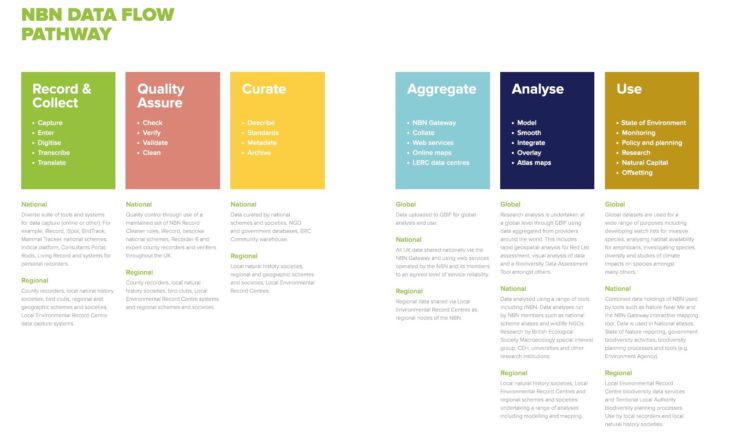Written by John Sawyer and Rachel Stroud, NBN Secretariat
E: j.sawyer@nbn.org.uk
The efficient flow of data from a recorder to a data user is of paramount importance to members of the National Biodiversity Network (NBN) and its Data Partners. Both recorder and user may be the same person or organization but often they are not and are separated by a complex data flow involving verifiers, curators and aggregators.
NBN members and Data partners are, quite rightly, concerned about data flows. In the development of the Network’s new five-year strategy the NBN Secretariat heard many views about data flows and the need to improve them, provided data quality is not compromised. We heard that data flow blockages were affecting onward re-use of data to the detriment of research, planning, education and conservation. Impeded data flows are believed to be impacting on:
- Risk assessments for invasive species and their subsequent management;
- Our ability to improve recorder motivation through real-time display of observations and use of natural language generation (automated feedback to recorders); and
- The immediate application of data in day-to-day planning decisions.
In response to the need to improve data flow, the Network has developed and published a Data Flow Pathway (see Figure 1). This pathway has six stages and can be applied to any data flow for any organisation or biological recording scheme or initiative. Not all stages are always critical to data flow. For example, data does not always have to be analysed before it can be used. Similarly, data can be analysed and used without being aggregated. However the six steps provide a useful structure for understanding biological data flow in the UK. Those six steps are:
- Record & Collect
- Quality assure
- Curate
- Aggregate
- Analyse
- Use
The Network has now developed a database of all biological recording schemes and projects in the UK. The NBN Secretariat would now like to evaluate each of these schemes against the national dataflow pathway in order to understand what is limiting data transfer at each stage from recorder to use. This work will build on past efforts by Network members with the aim of increasing data flow efficiency in the UK. A working group is being established as an advisory board to the project. If you have not already registered an interest in being involved in this work but would like to participate please email us
Figure 1 – Data Flow Pathway

